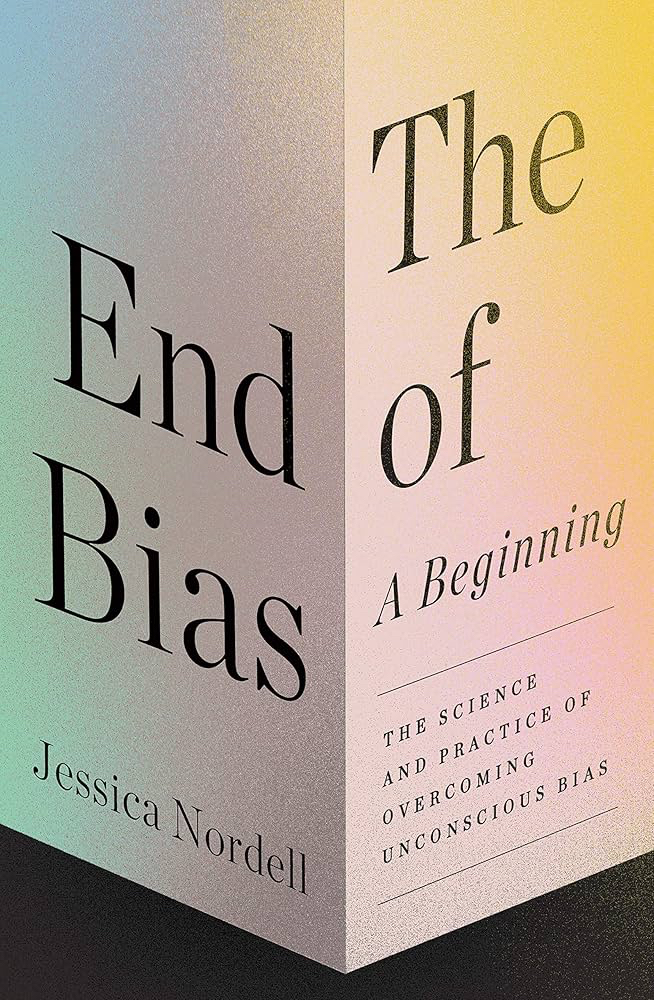
Author: Jessica Nordell
Genre: Nonfiction / Social Psychology / Self and Society
Ideal For: Anyone seeking a compassionate, evidence-based route to dismantling personal and institutional bias—workplaces, schools, law enforcement, and beyond
Why I Picked It Up
With social tensions at a peak and workplace diversity efforts often feeling performative, The End of Bias promised more than guilt-inducing self-awareness. As The New Yorker noted, it offers not just diagnosis, but solutions grounded in cognitive science and real-world successes. Nordell—an accomplished science journalist—emerges not just as a critic but as a change-maker, guiding readers on a journey from recognition to transformation.
Core Themes & Structure
Nordell explores unconscious bias—the habits of thought that skew our decisions and obscure our intentions. She shows how tiny preferences—like a 3 % bias in favour of men—compound over time, leading to 82 % male leadership in simulations.
Structured around real-life case studies—from an equity-focused math professor transforming graduation outcomes, to police departments embedding mindfulness—Nordell blends cognitive research with personal narratives. Her final message is clear: change happens by replacing bias with new habits and transforming systems, not through shame or guilt alone.
Why It Works So Well
1. Remarkable Real-World Stories
Take the math professor whose revamped teaching practices led 20 of 21 underrepresented students into graduate programs, 15 earning doctorates—a staggering demonstration of what inclusive structures can do. Or Oregon officers adopting mindfulness practices that measurably reduced use of force. These stories offer fresh insight and a reason for optimism.
2. Actionable and Evidence-Based Strategy
This isn’t a buffet of feel-good platitudes. Nordell outlines tools like NormCorp—her computer simulation proving bias accumulation’s impact . She emphasises methods such as mindfulness, structural changes (e.g. anonymous job applications), and inclusive practices that have solid, measurable results.
3. Compassionate Tone
Nordell doesn’t lecture. She acknowledges the “bias blind spot”—our tendency to think we’re less biased than others. Rather than blame, she offers self-compassion and curiosity as antidotes to defensiveness. This emotional grace invites readers in.
4. Blends Personal & Systemic Transformation
While chapters encourage individuals to challenge their assumptions, the book is equally insistent on systemic change. Nordell’s examples show that lasting transformation—whether in classrooms, courtrooms, or corporations—comes when we address both mindsets and structures.
5. Clear, Engaging Presentation of Complex Science
Nordell distills academic jargon (like priming and heuristics) into everyday language and relevant stories. She makes cognitive science shine—accessible, even gripping.
Where It May Challenge Some Readers
- Some Studies Feel Repetitive: Kirkus noted a few examples feel similar in message—once you’ve seen one structural triumph, another can feel familiar.
- Reflective Work Required: This isn’t a quick read. Transforming bias takes consistent self-reflection and structural commitment—meaning committing to months or years of change, not instant fixes.
You’ll Love This Book If You Enjoy…
- Biased by Jennifer Eberhardt – for data-driven approaches to implicit bias in policing
- Sway by Pragya Agarwal – for science-backed insights into how bias influences perception and decision-making
- Think Again by Adam Grant – for research-grounded frameworks to rethink assumptions
Personal Highlights
- NormCorp Demonstration: Watching a 3 % bias drive an 82 : 18 leadership skewing—one simulation, countless real-world parallels.
- Police Mindfulness: Patrol units calming cognitive load through breathing—regaining humanity and trust on the streets.
- Math Class Transformation: A culturally-attuned curriculum unlocking doctorate paths for Black and Latina students—a model replication of what inclusion can do.
- Swedish Gender-Neutral Preschool: Drops in stereotyping among children when pronouns were neutralised—prejudice prevented where it begins.
Final Thoughts: A Catalyst for Change
The End of Bias strikes a rare balance: rigorous, hopeful, and practical. Nordell doesn’t merely spotlight bias; she equips us with clear, impactful tools and systemic approaches. As The Guardian aptly stated, the book is “informative, compassionate and necessary”.
It’s an invitation to practice respectful curiosity, empathy, and structural reform—not just a bucket-list of annoyances. For workplaces, parents, educators, and communities, Nordell offers a realistic roadmap: one moment, one policy, one decision at a time, we can reshape bias into awareness, awareness into action, action into equity.
Five stars for clarity, courage, and unshakable optimism. If you want to become the kind of person—and the part of society—that values justice and humanity over snap judgments, this is your guide.


